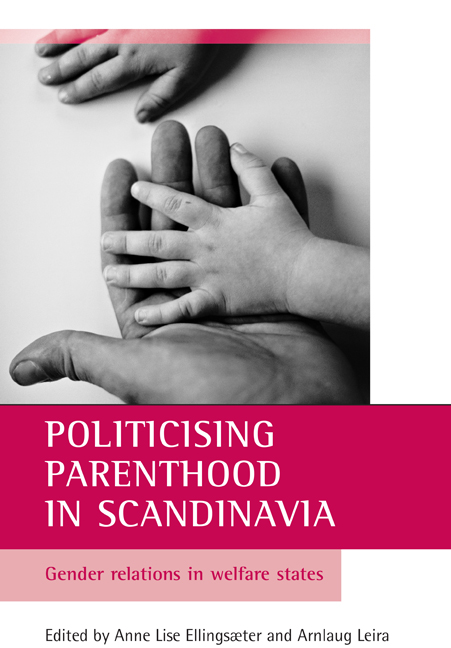Book contents
- Frontmatter
- Contents
- List of boxes, figures and tables
- Acknowledgements
- List of contributors
- one Introduction: politicising parenthood in Scandinavia
- Part One Politicising parenthood – legacies and challenges
- Part Two Gender equality and parental choice in welfare state redesign
- Part Three Work, family and the welfare state: redefining family models
- Index
five - The public–private split rearticulated: abolishment of the Danish daddy leave
Published online by Cambridge University Press: 15 January 2022
- Frontmatter
- Contents
- List of boxes, figures and tables
- Acknowledgements
- List of contributors
- one Introduction: politicising parenthood in Scandinavia
- Part One Politicising parenthood – legacies and challenges
- Part Two Gender equality and parental choice in welfare state redesign
- Part Three Work, family and the welfare state: redefining family models
- Index
Summary
Introduction
In 2002, the two weeks’ daddy leave in the Danish parental leave was abolished after an intensive debate in the media from March to July 2001, and at the same time the parental leave was extended from 26 to 52 weeks. The decision was passed by parties from the right-wing government, which had just taken office. Parental leave had not been placed high on the political agenda for many years, and the politicisation was triggered by the fact that the debate constituted a prelude to the electoral campaign preceding the parliamentary election in November 2001. Earmarking part of the leave for fathers turned out to be a very controversial issue during the debate.
The daddy leave, which was not transferable to the mother, had been adopted four years previously by a Social Democratic–Social Liberal government together with the left, and it had the intended outcome. From 1998 to 2001, the take-up rate of fathers increased from 7% to 24%, contrary to the very modest take-up rate of fathers during the 10-week period that could be shared by the father and the mother in parental leave from 1984 to 2000. During this period, only 5% of the fathers opted for leave. Compared to this, the earmarking was a veritable success, and yet, it was not portrayed as such in the media. This has to do with the success of the right-wing parties, and above all the Agrarian Liberals, who triggered the debate, in framing earmarking negatively as government interference in the private affairs of the family.
In this way, a public–private dichotomy that had played a modest role in Danish politics for many decades was rearticulated. The centre and left did not frame the daddy leave positively as entitlements of fathers, and they did not manage to activate a debate on the impact of the gendered construction of the leave. In this way, the gendered practices were reduced to being a matter of individual choices of fathers and mothers. The debate was not moved beyond arguments about the choices of the individual mothers and fathers, such that the significance of the structural aspects of the parental leave, such as its gendered constructions and impact on, for instance, employers’ attitudes to men opting for parental leave, was not brought into the focus.
- Type
- Chapter
- Information
- Politicising Parenthood in ScandinaviaGender Relations in Welfare States, pp. 101 - 120Publisher: Bristol University PressPrint publication year: 2006
- 3
- Cited by

